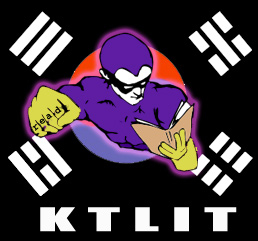 A slightly edited version of my essay for the 2nd Annual LTI Korea Essay Contest.
A slightly edited version of my essay for the 2nd Annual LTI Korea Essay Contest.
An essay that did NOT^^ win anything –
Kim In-sook’s Sea and Butterfly is, like several of her works, a sharply etched and powerful description of alienation, full of well-described incidents and characterizations that quickly draw readers into the story. A meditation on human relationships replaced by distance and destroyed by modernity, Sea and Butterfly is modern, universal, and easily comprehensible, making it an excellent story for readers of all countries.
Sea and Butterfly joins Kim’s The Long Road and To Be Insane, in placing Korean characters in overseas locations. This is unusual for Korean authors. Kim Yong-ik (They Won’t Crack it Open), Ch’oe Yun (The Last of Hanako), and Choe In-ho (Deep Blue Night) are among the handful of other Korean authors who have written similar ‘overseas’ stories. But by placing Ocean and Butterfly in China, Kim builds a knowledge and cultural bridge – giving potential foreign readers a setting with which they are more familiar and thus allowing them to situate themselves with the story more easily.
All of Kim’s authorial tools –plot, symbolism, theme, narrative stance, and description – are joined in the service of creating understanding of the narrator’s alienation (in fact, that of most of the characters) in the reader. This is an extremely modern story, told in an extremely modern manner, and yet, in a horrifying ‘story within a story,’ Kim also ties the alienation of today to the crimes of history.
Kim’s details are precise and immediately understandable. When Kim begins the story with a meditation on the risks of answering a phone in a new location, particularly a foreign one, she strikes a chord that all readers will be familiar with. Additionally, by beginning with a nearly universal experience she draws her readers in while at the same time briefly outlining the nature of expatriate life. In making a commonplace activity, answering the telephone, a locus of uncertainty, Kim provides in fractal detail, the larger problem of her narrator’s life – that she is unmoored, that perhaps there are no moorings.
Sea and Butterfly is alive with cleverly used symbols. When Kim’s narrator chooses to purchase a jinzhiyuye plant to bring something ‘alive’ into her foreign apartment and describes its delicacy and the rage that it makes her feel, she earns by this symbolic explanation the discomfort of her general state in life, “A sense of familiarity in strangeness washed over me like a recurring cold. Maybe I hadn’t run far enough.”
All elements of the plot reinforce the theme of alienation. Two families interact, the narrator’s and Lee Chae-geum’s. Lee Chae-geum is a young Korean-Chinese girl going from China to Korea to get married and to reunite with her mother, who works for the narrator’s mother. But although the families are deeply intertwined, they are also fragmented across the world and essentially unknown to each other. When, halfway through the story, the narrator admits that she could not identify Chae-geum’s mother on sight, the effect is chilling. The narrator, as befits the story’s theme, is emotionally withdrawn, a stance which makes the story even more effective as her withdrawal allows her to dispassionately analyze other characters in a way that both furthers the story and exposes the emptiness in her own heart. When the narrator compares Chae-geum’s mother to her own, it is both heart-breakingly frank and revealing of the narrator’s alienation from even her own mother.
Kim In-sook weaves these stories together, demonstrating that each character is in some way removed from deep and meaningful relationships. In the narrator’s case this is her flight to China with her daughter (who then immediately moves to a dormitory at a boarding school), in Chae-geum’s case it is an arranged marriage, for the narrator’s mother it is tight-fistedness, and so on through all the characters.
The ‘story within a story’ that fuels Ocean and Butterfly, is the story of an execution, witnessed many years ago by Chae-geum’s father. The execution haunts him, and others, down the generations. Upon witnessing the execution the father is immediately rendered blind (and unable to cry) in one eye. This story ups the ante on alienation as the “survivors” of the execution (the onlookers) are characterized as not having survived, but having been left behind. A clever reader will no doubt see parallels between the events witnessed and lived through by Chae-geum’s father, and the events of Korean history itself.
In a chilling coda to this tale, the narrator relives it as a dream in which her husband is the victim of the execution. Sea and Butterfly begins with an alienated stance and relentlessly increases the alienating pressure until, as the end of the story comes close, a character says, “I don’t buy this idea of fatherland or nationality … Money is what young people believe in.” In the modern world, human relationships have been completely replaced by economic ones. This point is reinforced by the narrator’s description of how her love for her husband evaporated as his work world ground him down, destroyed his will and even his ability to function as a man.
At the conclusion of Sea and Butterfly, when the narrator finds Chae-geum’s clumsily written pages of annyeong haseyo and “I am Korean,” all she can feel is “a fistful of sand” in her mouth and realize that she has traveled so far only “to avoid meeting.” Kim has artfully mapped out a geography of nowhere, an alienation so complete that it cannot be overcome
At only 28 pages Sea and Butterfly tells a sad story of universal impact – the loss of meaning and relationships in modern society, and the price we all pay for progress.


